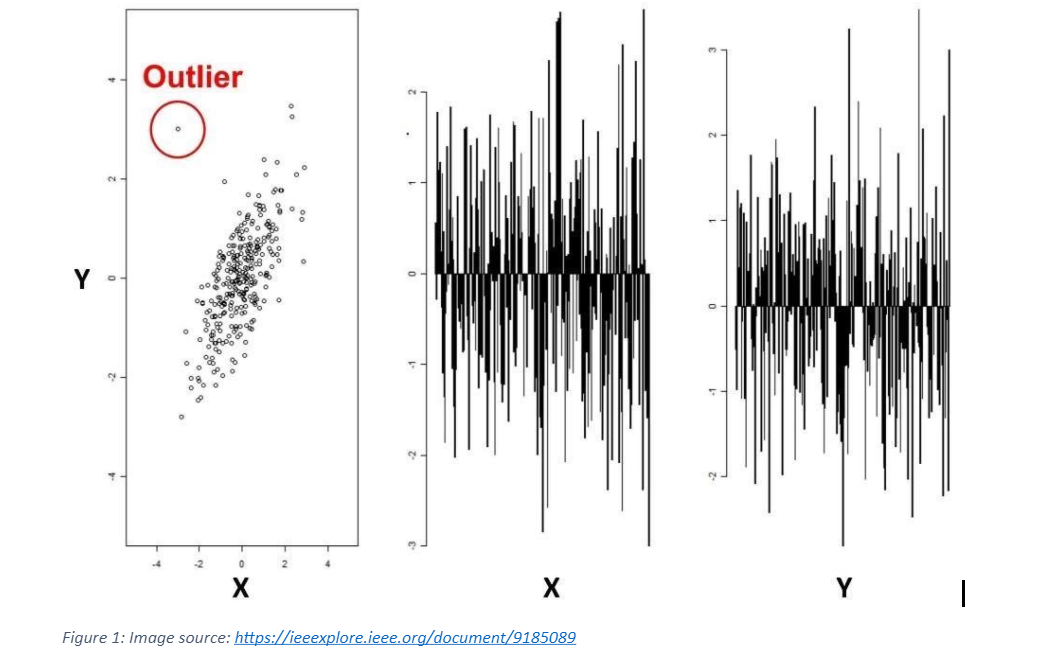Have you ever wondered why Google keeps notifying you when you log in through different devices? Or when your spending pattern suddenly changes, why do you get a notification from your credit card company?
Events such as these do not follow the usual pattern or are rare. They are called anomalies. Detecting such events form a significant part of fraud prevention and disaster mitigation.
As humans, we are always looking for patterns. Sometimes, these regular patterns are so repetitive that ignore them. But, at the same time, we are also looking for sudden changes that are not usual. These unusual events that do not subscribe to the typical pattern often give us critical information. For example, if a website has a sudden influx of visitors, it can be a potential cyber-attack. Similarly, if the air pressure in the atmosphere drops suddenly, it can lead to a storm.
In the world of academia, such anomalies can often lead to beautiful discoveries. But in the business world, we rarely want things out of order.
The faster and more accurately we can discover such anomalies, the better we can prevent something unwanted.
Business problems and use cases
Anomaly detection can solve many business problems.
In the world of finance, detecting anomalies can often lead to the prevention of fraudulent transactions. Fraud transactions can cause huge losses. Hence, noticing them as fast and as efficiently as possible becomes crucial.
Also read:
What 2 Men And a Runner Taught Me About Data Science and Fraud Modeling
We are now using the Internet of Things for various industrial needs. In such scenarios, anomaly detection can prevent hardware breakdowns, network failures, and even big accidents. Large-scale industrial plants often collect sensor data. Detecting anomalies in these signals is useful in ensuring that all the equipment is in optimal working conditions.
Anomaly detection is also useful in self-driven cars. In such systems, it can be critical for the safety of everyone in the vicinity. Similarly, cyber-attacks can often be prevented by continuously processing signals from network traffic and detecting any anomalies.
We can see that anomaly detection plays an important role in ensuring safety and quality in almost every field. But as more and more businesses increase their online activities, both the volume and financial stakes have gone up.
There is an increased effort to improve the safety and quality of service by creating better anomaly detection models.
Anomaly detection with machine learning
Organizations are working to improve existing anomaly detection models as they have become more and more critical in almost every business domain. Here, Artificial Intelligence, or AI, has been a big help by providing machine-learning and deep-learning-based anomaly detection models.
It is easier for humans to detect an irregular observation if we look at only one variable. For instance, let us consider the amount spent through credit cards. We can raise a red flag if the spending suddenly becomes much more than usual. However, large spending is not always a good indicator of an anomaly. Besides spending, other essential variables such as the items bought and the duration of the transaction also play an essential part.
A data point may look regular if we look at each variable separately. But we might discover it is an outlier, or an anomaly, if we look at all the variables together. Although it is not an easy task for us to look at high dimensional space and detect such outliers. machine learning-based models can do it.

Types of Anomaly Detection
We can broadly categorize machine learning-based anomaly detection into three groups:
- Supervised: The anomalies are labeled data points, so we know what a possible anomaly looks like. They are mostly unbalanced datasets in which a minor number of data points are anomalous
- Unsupervised: Here, the anomalies in the form of outliers are present but not labeled. The model needs to detect such outliers based on how different they are from most data points.
- Clean: This one is slightly difficult even for machine-learning-based models. This group of problems has a data set with only clean, regular, and non-anomalous data points. So, the model does not know what an anomaly looks like, as it hasn’t yet seen them. It can only observe regular data points and, based on that, detect an anomalous moment as and when it occurs later.
Conclusion
Thus we can see how AI helps the world be a safer place by doing its part. In Aryng, we use machine learning and deep learning-based algorithms to make anomaly detection models and help our clients. You can read about them more in our case studies.


